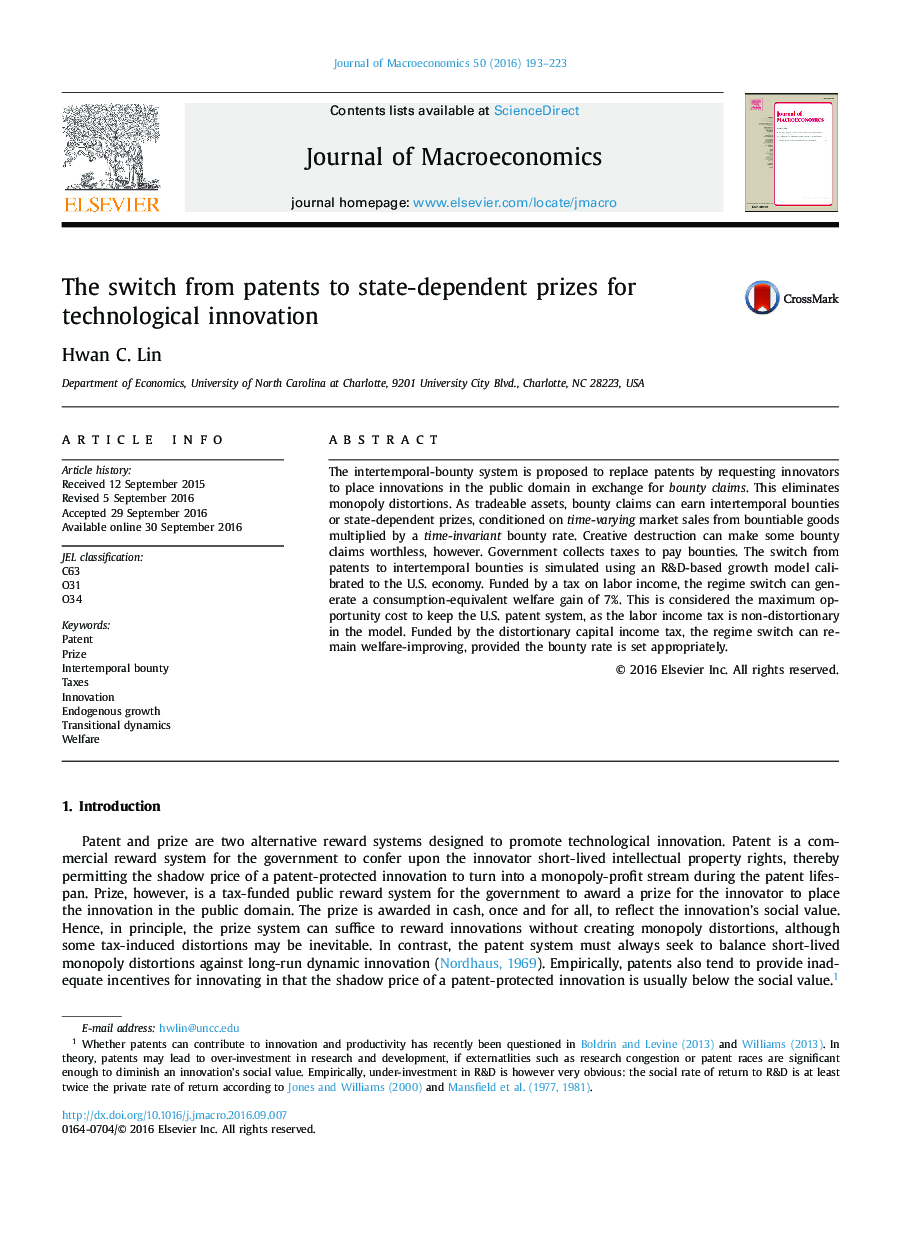| Article ID | Journal | Published Year | Pages | File Type |
|---|---|---|---|---|
| 5101344 | Journal of Macroeconomics | 2016 | 31 Pages |
Abstract
The intertemporal-bounty system is proposed to replace patents by requesting innovators to place innovations in the public domain in exchange for bounty claims. This eliminates monopoly distortions. As tradeable assets, bounty claims can earn intertemporal bounties or state-dependent prizes, conditioned on time-varying market sales from bountiable goods multiplied by a time-invariant
bounty rate. Creative destruction can make some bounty claims worthless, however. Government collects taxes to pay bounties. The switch from patents to intertemporal bounties is simulated using an R&D-based growth model calibrated to the U.S. economy. Funded by a tax on labor income, the regime switch can generate a consumption-equivalent welfare gain of 7%. This is considered the maximum opportunity cost to keep the U.S. patent system, as the labor income tax is non-distortionary in the model. Funded by the distortionary capital income tax, the regime switch can remain welfare-improving, provided the bounty rate is set appropriately.
Related Topics
Social Sciences and Humanities
Economics, Econometrics and Finance
Economics and Econometrics
Authors
Hwan C. Lin,
